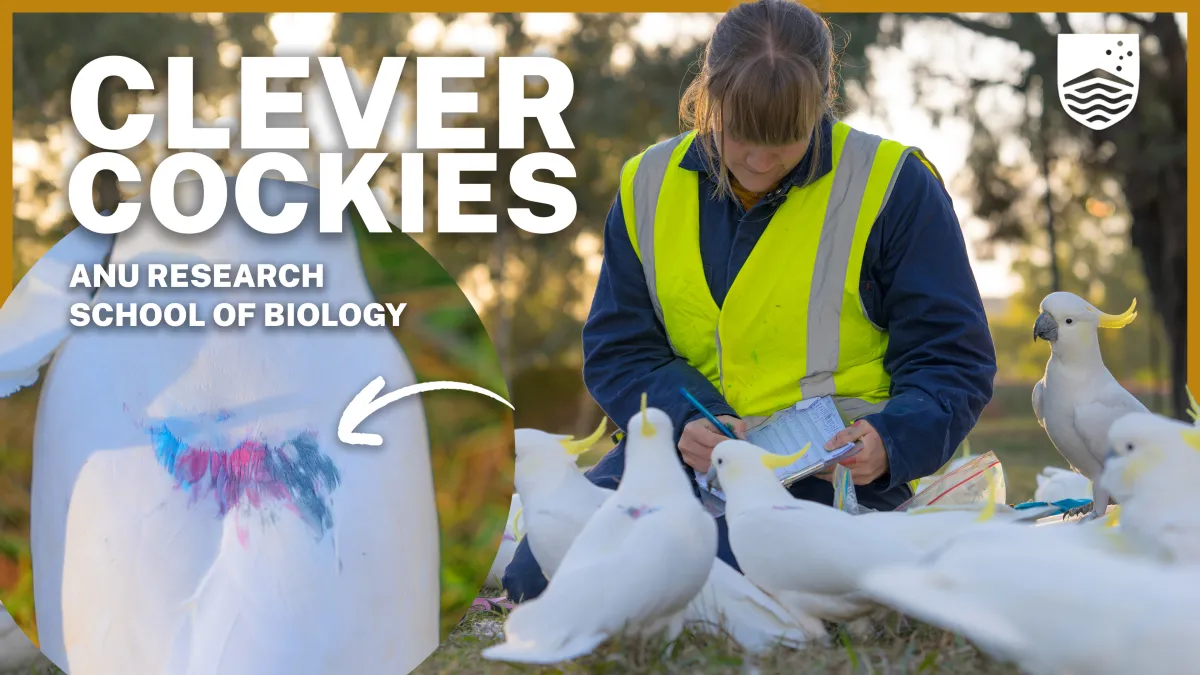
Clever cockies: the social and innovative birds living in our cities
Surrounded by a crackle of sulfur-crested cockatoos (yes, that’s the collective noun), Dr Julia Penndorf sits on the grass holding a clipboard and a Tupperware container of seeds as the sun rises over ANU campus. It’s an adorable sight – but what is she up to?
Working on the Clever Cockie Project, Dr Penndorf is tracking all the odd but fascinating behaviours that Sydney and Canberra cockatoos get up to in urban environments.
The project has already found that cockies are adapting to living in cities in creative ways, including prising open garbage bins and backpacks, and wisely choosing human lunchtimes to forage in urban green areas.
“We’re also interested in how the social behaviour spreads through the network,” says Dr Penndorf from the ANU Research School of Biology. “How did they learn the novel behaviour?”
During fieldwork season, team members return to the same locations and observe the cockatoos every morning and evening. Before getting close to mark the boisterous birds with temporary dye, they need to befriend them first (albeit with the least interference possible). Luring them in with yummy seeds seems to work, and now the opportunistic birds join Dr Penndorf at her spot by Sullivans Creek every day at dawn.
Alongside these daily observations, the study uses citizen science reports of cockatoos and their behaviours. With the public encouraged to upload their own sightings and photos of marked cockatoos to the Big City Birds app.
“To have the input of the many eyes of citizen science is amazing,” Dr Penndorf says.
Dr Penndorf has noticed that the birds are much like the other inhabitants of a city. They have besties, and the occasional beef.
“Cockatoos maintain all these differentiated relationships, despite being in this huge abundance of other individuals,” she says. They are very social animals – one cockatoo in Canberra may encounter up to five hundred other birds in their day.
While it’s clear that there are distinct groups that roost around the Canberra study area, Dr Penndorf has noticed a lot of movement between these groups. This year, she’s focusing on exploring these evolving movements of the cockies around the city.
There’s always more to learn about these ubiquitous city dwellers, who live and innovate alongside us every day.
To find out how you can contribute visit the Clever Cockie Project website.







